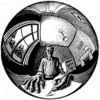To answer questions about
The Divine Comedy: Inferno - Purgatorio - Paradiso,
please sign up.
Dave Jones
I read John Ciardi's translation. Mr. Ciardi has credentials both as a poet and understanding Italian. He uses his Italian/poetry chops to translate this as poetry (i.e. it rhymes). The end notes are fascinating and definitely add insight to the poem. It's a wonderful work that I have read twice. (I wish it was available in the Kindle format!)
Joo Hani
I've read a few and can now say that the Robert Durling and Ronald Martinez version is the authoritative Divine Comedy.
The facing Italian / English, the endnotes, the inter cantica essays - everything about it helps you to understand the Comedy in a way that is never overbearing or intimidating.
The facing Italian / English, the endnotes, the inter cantica essays - everything about it helps you to understand the Comedy in a way that is never overbearing or intimidating.
Dan McSweeney
I’m reading Dorothy L. Sayers’ Penguin Classics version now. It’s the first time I’ve read the Divine Comedy so I can’t compare it to any other translation, but I love it.
She, as you will know, was best known as a British detective fiction writer, working from the 1920s through the 1950s. But she was no slouch when it came to the classics, and she got a first-class honours degree at Oxford in 1915, at a time when women weren’t even awarded degrees. (She eventually received it when the college evolved to the point where they allowed them.) Despite becoming a household word for her popular fiction, she always felt that the Dante translation was her life’s best work.
Although I can’t compare this to other translations, here’s what I like:
• It sticks to the original Italian terza rima structure (ie, three-line stanzas in the ABA, BCB, CDC… format). That might sound a gimmicky way to translate and a hard trick to pull off, but she does it very well. It never feels forced.
• I’m pretty good with vocabulary but have started writing down the words I've met whose meanings I didn’t know. The average per canto is well over one. (Brits of course seem to have instinctive access to a deeper vocabulary pool than Americans do, but they’re all valid English words.) Empery… Havering… Wight… Diuturnal… Blether… And that’s just Cantos II and III. OK, some of these are going to be archaic, but there’s no harm learning them. And they’re just a very tiny fraction of the overall poem.
• I think both the general background notes and the explanatory notes accompanying each canto are superb. There’s a 47-page Glossary that gives helpful notes on just about anyone – actual human or mythical being – or anywhere – actual place on Earth or mythical location – that appears in the story. And there’s a long essay describing the Italian politics of the time, and how they ensnarled Dante and eventually led to his exile and this book. I’d never heard of the Guelphs before. Rounding it out are maps of where the action takes place, and short essays mapping Dante’s journey to real-time starting on Holy Thursday 1300, and on Ptolemy’s theory of how the sun and planets interacted (the accepted explanation of the day).
• Again, I can’t compare this to other translations, but you get a real sense that Ms. Sayers tried to honor Dante’s vision of this being primarily a spiritual work. It wasn’t intended as a rip-roaring story told for its own sake, it was a serious reminder that our earthly lives are the only chance we get to make the choices that will decide what happens to us after we die. This translation makes it very clear that for Dante, our time here is just a short and relatively trivial moment on the spiritual journey our souls are struggling through.
Finally, this translation is about seventy years old (the first volume, Inferno, came out in 1949), and is still in print, easily obtainable, and relatively cheap. I think the fact that it’s lasted so long also speaks to its substance.
She, as you will know, was best known as a British detective fiction writer, working from the 1920s through the 1950s. But she was no slouch when it came to the classics, and she got a first-class honours degree at Oxford in 1915, at a time when women weren’t even awarded degrees. (She eventually received it when the college evolved to the point where they allowed them.) Despite becoming a household word for her popular fiction, she always felt that the Dante translation was her life’s best work.
Although I can’t compare this to other translations, here’s what I like:
• It sticks to the original Italian terza rima structure (ie, three-line stanzas in the ABA, BCB, CDC… format). That might sound a gimmicky way to translate and a hard trick to pull off, but she does it very well. It never feels forced.
• I’m pretty good with vocabulary but have started writing down the words I've met whose meanings I didn’t know. The average per canto is well over one. (Brits of course seem to have instinctive access to a deeper vocabulary pool than Americans do, but they’re all valid English words.) Empery… Havering… Wight… Diuturnal… Blether… And that’s just Cantos II and III. OK, some of these are going to be archaic, but there’s no harm learning them. And they’re just a very tiny fraction of the overall poem.
• I think both the general background notes and the explanatory notes accompanying each canto are superb. There’s a 47-page Glossary that gives helpful notes on just about anyone – actual human or mythical being – or anywhere – actual place on Earth or mythical location – that appears in the story. And there’s a long essay describing the Italian politics of the time, and how they ensnarled Dante and eventually led to his exile and this book. I’d never heard of the Guelphs before. Rounding it out are maps of where the action takes place, and short essays mapping Dante’s journey to real-time starting on Holy Thursday 1300, and on Ptolemy’s theory of how the sun and planets interacted (the accepted explanation of the day).
• Again, I can’t compare this to other translations, but you get a real sense that Ms. Sayers tried to honor Dante’s vision of this being primarily a spiritual work. It wasn’t intended as a rip-roaring story told for its own sake, it was a serious reminder that our earthly lives are the only chance we get to make the choices that will decide what happens to us after we die. This translation makes it very clear that for Dante, our time here is just a short and relatively trivial moment on the spiritual journey our souls are struggling through.
Finally, this translation is about seventy years old (the first volume, Inferno, came out in 1949), and is still in print, easily obtainable, and relatively cheap. I think the fact that it’s lasted so long also speaks to its substance.
Ralph Benton
I've read a few different versions, and prefer Mark Muss. He translates the Italian not as some biblical text, but as Dante wrote it, raw and occasionally crude. Excellent notes as well.
Joe
I read Ciardi's Inferno in high school and liked it, but have just finished Robin Kirkpatrick's which is eminently readable. I tripped over a couple of modern phrases, but in general I felt he conveyed a deep understanding of the poem in a way that was easy to follow.
Leslie Garland
I have the Robin Kirkpatrick translation.
Johnny Carruthers
My favorite translation has been John Ciardi's, if that helps.
Forked Radish
In my opinion, John D. Sinclair's translation is the best. The original Italian is on the left and his translation is on the right. It was originally published in 1948 by Oxford University Press and comes in three volumes.
Shon Ellerton
I've studied this book in great detail when I was in high school. By far, my favourite translation is done by Mark Musa. He does NOT try to make it rhyme in English but he does translate it as it should be: earthy and frank. It is also very readable. Try to get the separate Penguin books for Inferno, Purgatory and Paradise (not the all-in-one Divine Comedy). The all-on-one leaves out many of the wonderful maps and Dore illustrations. The footnotes are very good as well and very informative.
Alicia
I am currently reading both Ciardi's version alongside of Mandelbaum's which I bought for the Botticelli illustrations. Both have good notes, although Ciardi's are very detailed and analytical, not merely explanatory. The Mandelbaum seems easier to read, although he doesn't break the cantos up into tercets like Ciardi.
The only reason I went with Ciardi instead of the widely recommended Hollander translation was because the latter had to be bought in 3 separate volumes. Prue Shaw (Dante, From Here to Eternity) also recommends this version.
The only reason I went with Ciardi instead of the widely recommended Hollander translation was because the latter had to be bought in 3 separate volumes. Prue Shaw (Dante, From Here to Eternity) also recommends this version.
Greg
Whatever translation you chose, you MUST have one with Dore's illustrations/engravings. They are spectacular, horrifying, inventive, entertaining and most of all they breath an extra air of life to each canto. I am reading the Lawrence Grant White translation published and printed in 1948. I bought an almost mint condition copy for a buck at a used book store!
Evangeline Simmons
I liked Henry David Thorough. I have only read one other translation though and his was still archaic.
Heath Morber
Check out Esolen's version. Skillfully translated and good notes. I also love Clive James', but he goes outside the box and I don't recommend it for neophytes.
The Hollander translation is the academic standard, I believe, but the notes can be overwhelming for first-timers.
The Hollander translation is the academic standard, I believe, but the notes can be overwhelming for first-timers.
About Goodreads Q&A
Ask and answer questions about books!
You can pose questions to the Goodreads community with Reader Q&A, or ask your favorite author a question with Ask the Author.
See Featured Authors Answering Questions
Learn more














